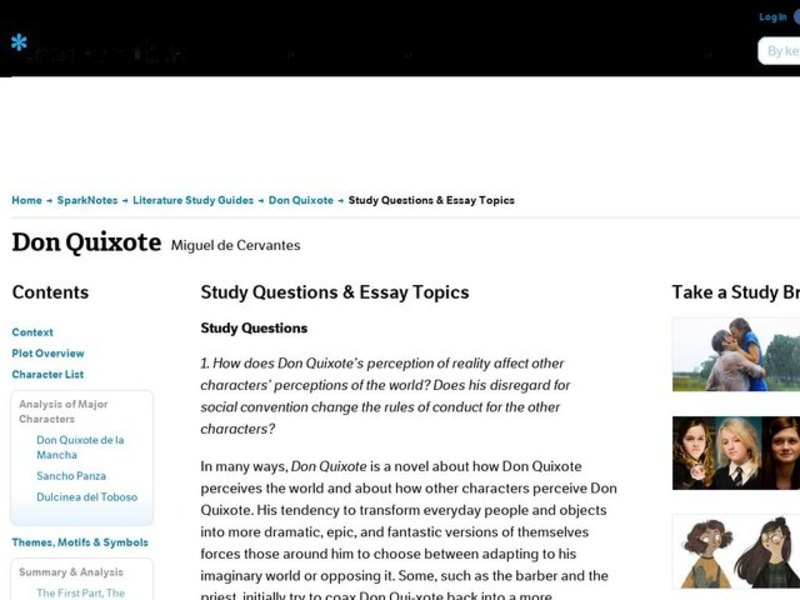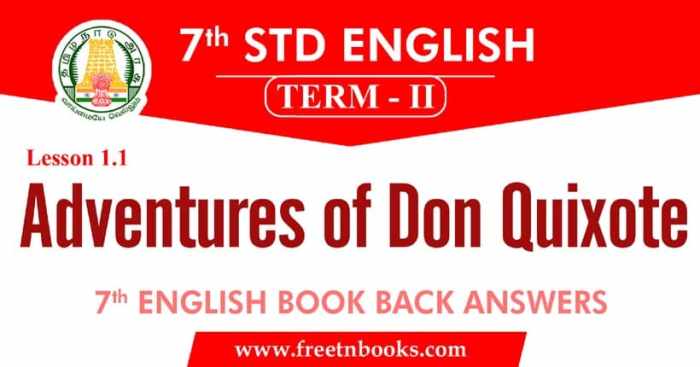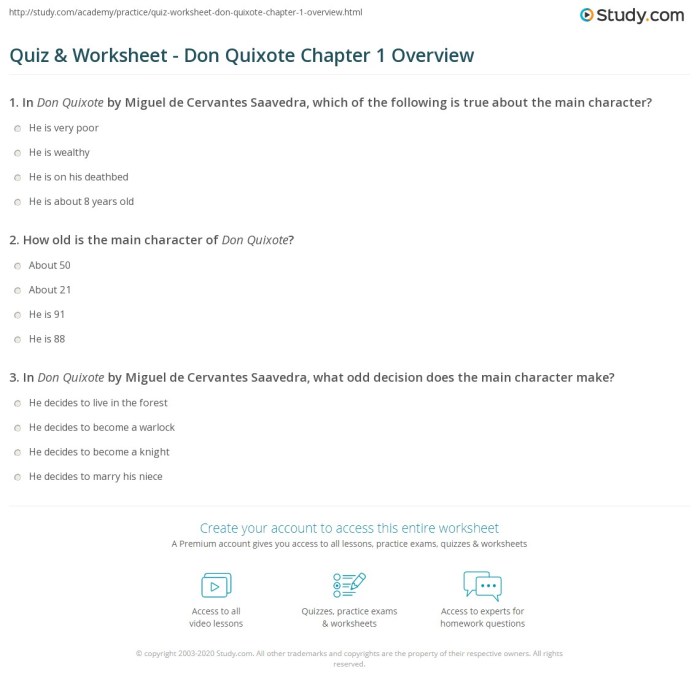Beginning with Don Quixote Questions and Answers PDF, this guide delves into the timeless literary masterpiece, offering a comprehensive exploration of its characters, themes, and cultural significance. Discover the adventures of the iconic knight errant and his loyal squire as we unravel the profound insights and enduring legacy of Miguel de Cervantes’s masterpiece.
Through in-depth analysis and accessible explanations, this guide provides a deeper understanding of Don Quixote’s literary techniques, historical context, and its enduring impact on literature and popular culture.
Introduction
Don Quixote, a literary masterpiece by Miguel de Cervantes, stands as a seminal work of Spanish literature and a cornerstone of Western civilization. Published in 1605, the novel follows the chivalrous adventures of an idealistic knight errant, Don Quixote, and his loyal squire, Sancho Panza.
Through their exploits, Cervantes satirizes the conventions of chivalry and explores themes of idealism, reality, and the human condition.
Characters: Don Quixote Questions And Answers Pdf
Don Quixote:A middle-aged gentleman from La Mancha who, after reading too many chivalric romances, becomes convinced that he is a knight errant destined to right wrongs and defend the helpless. He is a dreamer and idealist, but also a fool and a madman.
Sancho Panza:Don Quixote’s squire, a simple, uneducated peasant who is more concerned with food and sleep than with chivalry. He serves as Don Quixote’s voice of reason and reality, but he also shares his master’s delusions to some extent.
Dulcinea del Toboso:Don Quixote’s ideal woman, a beautiful and virtuous lady whom he has never met. She represents the unattainable object of his affections and his chivalric ideals.
Relationships Between the Characters, Don quixote questions and answers pdf
The relationship between Don Quixote and Sancho Panza is central to the novel. They are a mismatched pair, but they complement each other perfectly. Don Quixote’s idealism and Sancho Panza’s practicality create a dynamic tension that drives the story forward.
Don Quixote’s relationship with Dulcinea is also important. She is the object of his affections and the inspiration for his chivalric adventures. However, she is also a figment of his imagination, and his love for her is a symbol of his inability to distinguish between reality and fantasy.
Themes

Idealism vs. Reality:Don Quixote’s chivalric ideals are constantly clashing with the harsh realities of the world. He sees himself as a noble knight errant, but others see him as a madman. This conflict between idealism and reality is a major theme of the novel.
The Folly of Human Nature:Don Quixote’s delusions of grandeur are a reflection of the folly of human nature. We all have a tendency to see ourselves in a better light than we actually are, and we often refuse to accept the limitations of reality.
The Power of Imagination:Don Quixote’s imagination is a powerful force that drives him to pursue his chivalric ideals. However, it is also a source of his delusions and his inability to distinguish between reality and fantasy.
Literary Techniques

Irony:Cervantes uses irony throughout the novel to create humor and to satirize the conventions of chivalry. For example, Don Quixote’s chivalrous ideals are constantly undercut by the reality of his situation.
Satire:Cervantes also uses satire to criticize the society of his time. He mocks the hypocrisy and corruption of the upper classes and the ignorance and superstition of the lower classes.
Symbolism:The novel is full of symbols that represent different themes and ideas. For example, Don Quixote’s helmet represents his delusions of grandeur, and Sancho Panza’s donkey represents his practicality and common sense.
Cultural and Historical Context

Don Quixote was written during the Spanish Golden Age, a time of great cultural and intellectual achievement. The novel reflects the values and beliefs of the time, including the importance of chivalry, the power of imagination, and the folly of human nature.
The novel also reflects the historical context of the time. Spain was a major power in the 16th century, but it was also a country that was struggling with social and economic problems. Don Quixote’s adventures can be seen as a metaphor for Spain’s own struggles during this period.
Adaptations and Legacy

Don Quixote has been adapted into numerous forms of media, including film, television, and opera. The novel has also been translated into over 100 languages and is one of the most widely read works of literature in the world.
Don Quixote’s legacy is immense. The novel has influenced countless writers, artists, and musicians. It is also a source of inspiration for people all over the world who are struggling to find their place in the world.
Popular Questions
What is the significance of Don Quixote as a literary classic?
Don Quixote is a foundational work of Western literature, renowned for its exploration of human nature, idealism, and the power of imagination. It has inspired countless adaptations, translations, and artistic interpretations.
Who are the main characters in Don Quixote?
The novel revolves around the titular character, Don Quixote, an idealistic knight errant, and his practical squire, Sancho Panza. Their contrasting perspectives and adventures provide a rich tapestry of humor, wisdom, and social commentary.
What are the major themes explored in Don Quixote?
The novel explores themes of idealism vs. reality, the nature of heroism, the power of imagination, and the complexities of human nature. These themes are woven into the characters’ journeys and interactions, creating a profound and thought-provoking narrative.